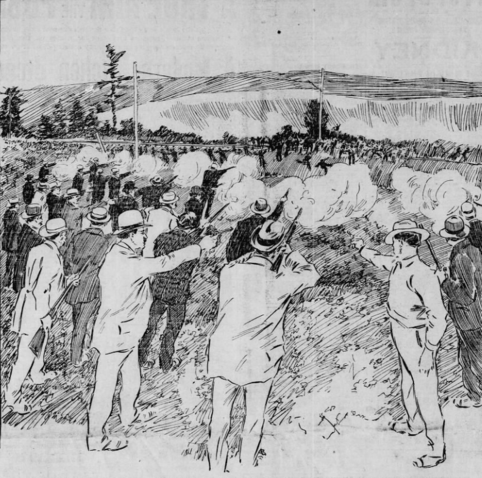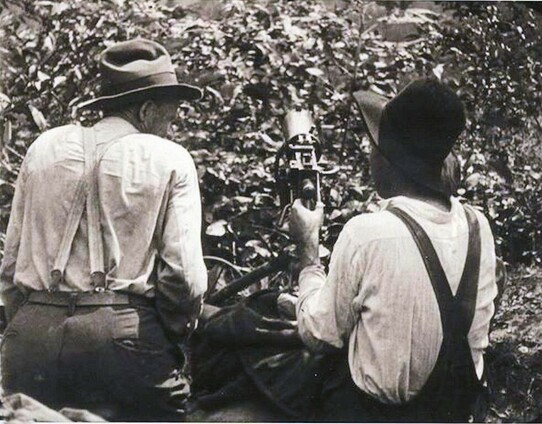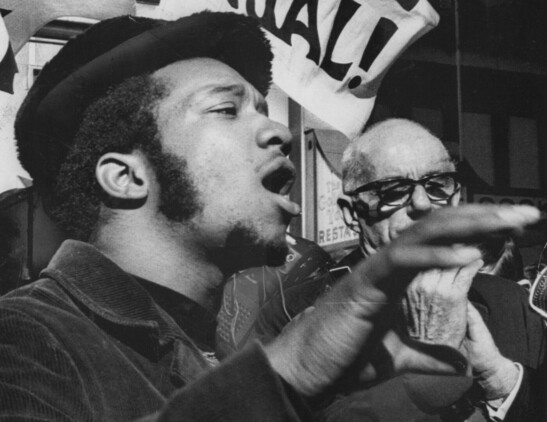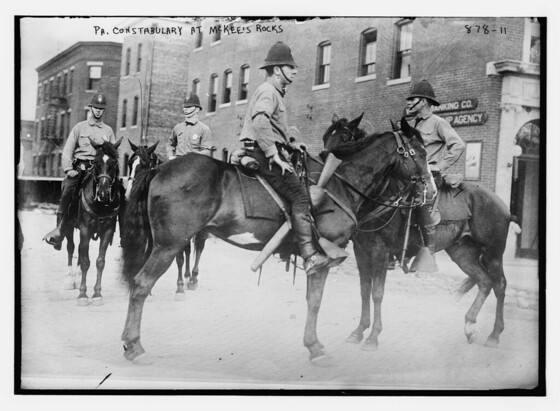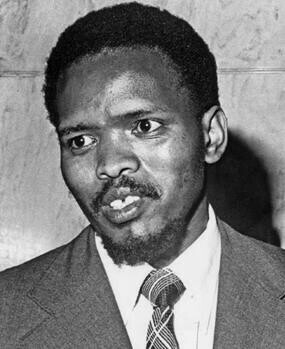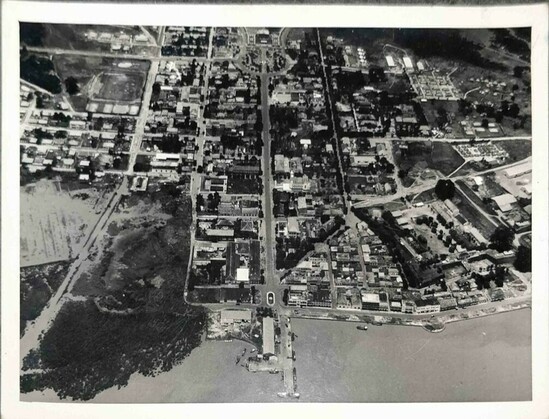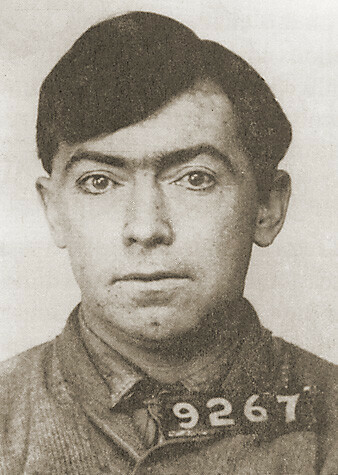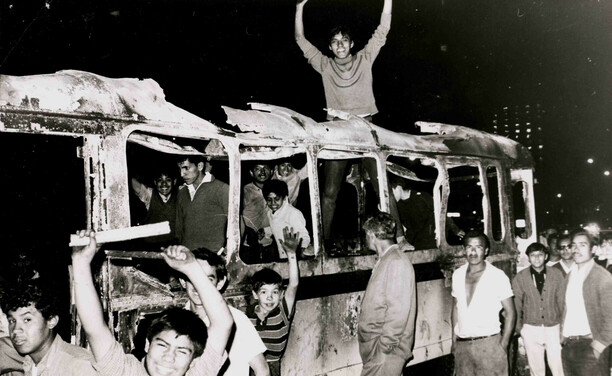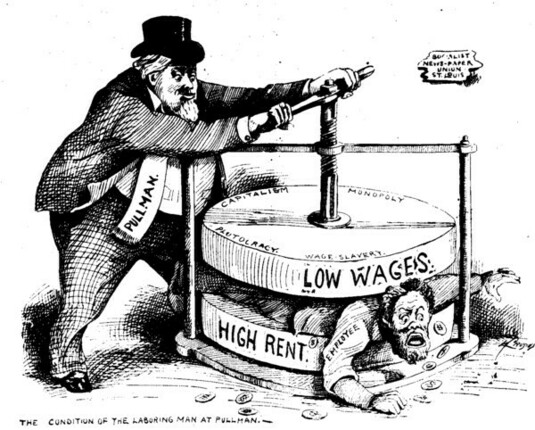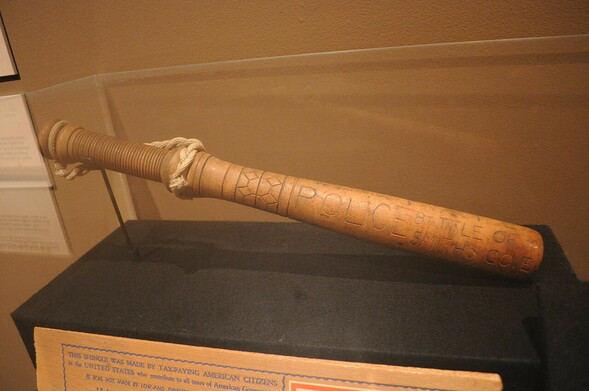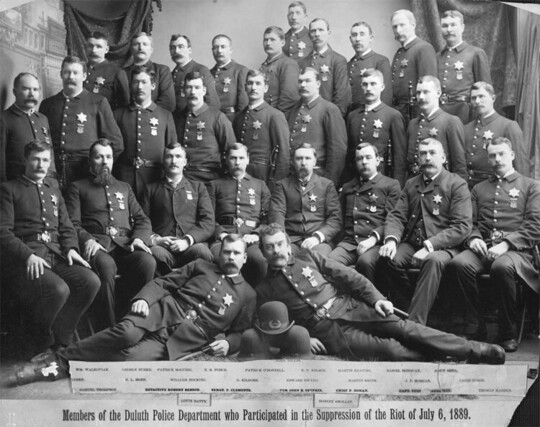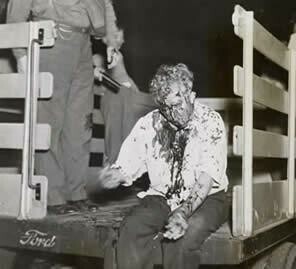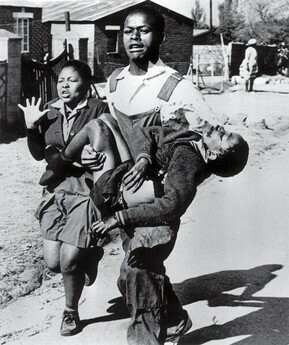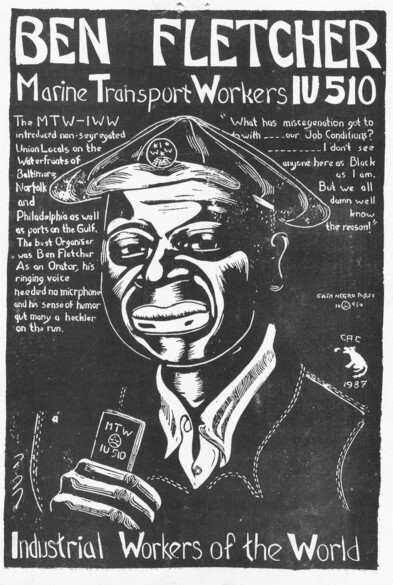MikeDunnAuthor · @MikeDunnAuthor
1936 followers · 4161 posts · Server kolektiva.socialToday in Labor History September 10, 1897: A sheriff and deputies killed 19 striking miners and wounded 40 others in Lattimer mine, near Hazelton, Pennsylvania during a peaceful mining protest. Many of those killed were originally brought in as strikebreakers, but then later organized and joined the strike. The miners were mostly Polish, Lithuanian, Slovak and German. The massacre was a turning point for the UMW. Working and safety conditions were terrible. 32,000 miners had died from 1870-1897, just in the northeastern coalfields of Pennsylvania. Wages had dropped 17% since the mid-1890s.
The strike began in mid-August, when teenage mule drivers walked off the job to protest the consolidation of stables, which had forced them to walk much further just to get to work. After a scuffle between drivers and supervisors, two thousand men walked out, as well. Soon, all the mines in the region had joined the strike. Most of the men who weren’t already members of the UMW quickly joined the union. Up to 10,000 miners were now on strike. The mine owners’ private police, known as the Coal & Iron Police (miners called them Cossacks, for their brutality), was too small to quash the strike, so they called on the sheriff to intervene. He mustered a posse of 100 Irish and English immigrants, who confronted the miners as they marched toward Latimer, on Sep 10. Along the way, they joked about how many miners they were going to kill.
The massacre provoked a near uprising. The sheriff called for the deployment of the National Guard, which sent 2,500 troops to quell the unrest. 10 days later, a group of Slavic women, armed with fire pokers and rolling pins, led 150 men and boys to shut down the McAdoo coal works, but were stopped by the National Guards. The sheriff, and 73 deputized vigilantes, were put on trial. However, despite evidence clearly showing that most of the miners had been shot in the back, and none had been armed, they were all acquitted.
#WorkingClass #LaborHistory #coal #mining #union #strike #latimer #massacre #police #PoliceBrutality #PoliceMurder #immigration
#workingclass #LaborHistory #coal #mining #union #strike #latimer #massacre #police #policebrutality #policemurder #immigration
smeg · @smeg
710 followers · 6025 posts · Server assortedflotsam.com"Police said investigators are working to determine how the false account of the incident emerged."
It's because cops lie. Cops are capable of being bad faith actors just like anyone else.
Eddie Irizarry: Philadelphia officer charged with fatal shooting of motorist - BBC News
https://www.bbc.com/news/world-us-canada-66758436 #police #policemurder #badcop #acab
#police #policemurder #badcop #acab
MikeDunnAuthor · @MikeDunnAuthor
1901 followers · 4062 posts · Server kolektiva.socialToday in Labor History September 2, 1921: The Battle of Blair Mountain ended on this date in 1921, with the U.S. government bombing striking coal miners by plane, the second time the U.S. government used planes to bomb its own citizens (the first was in the Tulsa riots, earlier that year). The Battle of Blair Mountain was one of the largest civil uprisings in U.S. history and the largest armed insurrection since the Civil War. The uprising lasted 5 days and involved 10,000-15,000 coal miners confronting an army of scabs and police. The battle came as mine owners tried to crush attempts by coal miners to unionize the southwestern West Virginia coalfields. From the late 1800s, mine owners forced workers to live in company towns, where rent was deducted from their wages and they were paid in scrip, which was accepted only at the overpriced company stores and was worthless everywhere else. The work was very dangerous and safety equipment and precautions were minimal. The mine owners had a long tradition of using private detectives and goons to spy on workers, infiltrate their meetings, rough them up, and block any attempts to unionize. The battle began after Sheriff Sid Hatfield (an ally of the miners and hero from the Battle of Matewan) was assassinated by Baldwin-Felts agents. Much of the region was still under martial law as a result of the Battle of Matewan. Miners began to leave the mountains armed and ready for battle. Mother Jones tried to dissuade them from marching into Logan and Mingo Counties, fearing a bloodbath. Many accused her of losing her nerve. The miners ignored her and a battle ensued between miners and cops, private detectives, scabs and eventually the U.S. military.
#WorkingClass #LaborHistory #coal #mining #strike #union #BlairMountain #WestVirginia #matewan #police #PoliceBrutality #massacre #PoliceMurder #Riot #MotherJones
#workingclass #LaborHistory #coal #mining #strike #union #blairmountain #westvirginia #matewan #police #policebrutality #massacre #policemurder #Riot #motherjones
MikeDunnAuthor · @MikeDunnAuthor
1895 followers · 4025 posts · Server kolektiva.socialToday in Labor History August 30, 1948: Fred Hampton revolutionary activist and chairman of the Illinois chapter of the Black Panther Party was born. He founded the antiracist, anti-class Rainbow Coalition, a prominent multicultural political organization that included Black Panthers, Young Patriots (which organized poor whites), and the Young Lords (which organized Hispanics), and an alliance among major Chicago street gangs to help them end infighting and work for social change. In December 1969, the Chicago police & FBI drugged Hampton, shot him and killed him in his bed during a predawn raid. They sprayed more than 90 gunshots throughout his apartment. They also killed Black Panther Mark Clark and wounded several others. In January 1970, a jury concluded that Hampton's and Clark's deaths were justifiable homicides.
Stephen King refers to Hampton in his novel “11/22/63” (2012). In that book, a character suggests that if you could travel back in time to prevent John F. Kennedy's assassination, it could have a ripple effect that also prevented Hampton's assassination.
#WorkingClass #LaborHistory #BlackPanthers #FredHampton #chicago #police #PoliceMurder #PoliceBrutality #fbi #racism #StephenKing #fiction #books #novel #writer #author #BlackMastadon @bookstadon
#workingclass #LaborHistory #blackpanthers #FredHampton #chicago #police #policemurder #policebrutality #fbi #racism #stephenking #fiction #books #novel #writer #author #BlackMastadon
MikeDunnAuthor · @MikeDunnAuthor
1861 followers · 3960 posts · Server kolektiva.socialToday in Labor History August 23, 1909: IWW strikers boarded a streetcar in McKees Rock, Pennsylvania looking for scabs, during the Pressed Streetcar Strike, in the Mckees Rock borough of Pittsburgh. A deputy sheriff shot at them and was killed in the return fire. A gun battle ensued that killed 12-26 workers. IWW cofounder, William Trautman, led the Wobbly contingent during the strike. He later wrote a novel, “Riot,” based on the strike. After the authorities arrested Trautman during the strike, Big Bill Haywood and Joe Ettor came to organize the strikers.
Pressed Streetcar employed 6,000 people, mostly immigrant, from 16 different ethnic backgrounds. It was the second largest streetcar manufacturer in the country. Working conditions were horrendous, even by Pittsburgh standards. Locals referred to it as the slaughterhouse. The local coroner estimated that workers were dying at a rate of one per day, mostly by cranes. Slavic immigrants complained that company officials forced their wives and daughters to perform sexual favors in exchange for debts owed to the company for food and rent.
#WorkingClass #LaborHistory #strike #union #IWW #pittsburgh #riot #massacre #police #PoliceBrutality #PoliceMurder #BigBillHaywood #immigration #books #author #writer @bookstadon
#workingclass #LaborHistory #strike #union #IWW #pittsburgh #Riot #massacre #police #policebrutality #policemurder #bigbillhaywood #immigration #books #author #writer
MikeDunnAuthor · @MikeDunnAuthor
1860 followers · 3949 posts · Server kolektiva.socialToday in Labor History August 22, 1917: Italian police opened fire on protesters against the hunger caused by World War I. Most of the protesters were women. The next day, workers declared a General Strike. On the 24th, a state of siege was declared, but the strike continued until the 26th. Police violence during the strike resulted in the deaths of 60 people.
#WorkingClass #LaborHistory #italy #WorldWar1 #massacre #hunger #famine #protest #GeneralStrike #women #police #PoliceMurder #PoliceBrutality
#workingclass #LaborHistory #italy #worldwar1 #massacre #hunger #famine #protest #generalstrike #women #police #policemurder #policebrutality
MikeDunnAuthor · @MikeDunnAuthor
1846 followers · 3919 posts · Server kolektiva.socialToday in History August 18, 1977: Steve Biko was arrested at a police roadblock under the Terrorism Act No. 83 in King William's Town, South Africa. He later died from injuries received during this arrest. Biko was a socialist and an anti-apartheid activist. He was 31 at the time of his assassination. He was influenced by the teachings of Martinican philosopher Frantz Fanon and the American Black Power Movement. His death brought international attention to South Africa's apartheid policies and helped launch the modern anti-apartheid movement.
#WorkingClass #LaborHistory #StevenBiko #biko #SouthAfrica #apartheid #racism #police #terrorism #PoliceBrutality #PoliceMurder #socialism #BlackMastadon
#workingclass #LaborHistory #stevenbiko #Biko #southafrica #apartheid #racism #police #terrorism #policebrutality #policemurder #socialism #BlackMastadon
MikeDunnAuthor · @MikeDunnAuthor
1774 followers · 3767 posts · Server kolektiva.socialToday in Labor History August 3, 1959: Portugal's state police force, PIDE, fired upon striking dock workers in Bissau, Portuguese Guinea, killing over 50 people, during the Pidjiguiti massacre. The government blamed the revolutionaries from the African Party for the Independence of Guinea and Cape Verde (PAIGC). The event caused PAIGC to give up their nonviolent campaign and engage in the Guinea-Bissau War of Independence.
#WorkingClass #LaborHistory #strike #union #portugal #guinea #massacre #colonialism #independence #police #PoliceBrutality #PoliceMurder
#workingclass #LaborHistory #strike #union #portugal #guinea #massacre #colonialism #independence #police #policebrutality #policemurder
MikeDunnAuthor · @MikeDunnAuthor
1774 followers · 3766 posts · Server kolektiva.socialToday in Labor History August 3, 1913: Four died in the so-called "Wheatland riots" when police fired into a crowd of California farmworkers trying to organize with the IWW. The dead included the district attorney and sheriff, as well as two farm workers. The governor called in the national guard to restore order. Those arrested were subjected to starvation and beatings. Some were threatened with death if they didn’t confess to murder. The courts convicted two labor leaders of murder, Blackie Ford and Herman Suhr, for encouraging workers to organize and causing them to “riot.” One of the convicted men was not even present at the massacre.
Despite the convictions, membership in the IWW continued to soar, making it far more successful than its predecessor, the Knights of Labor. The riots also led the governor, Hiram Johnson, to investigate the underlying causes of the riot. This led to new legislation for regular inspections of the state’s agricultural labor camps, where conditions were deplorable. There was seldom clean water available and workers routinely contracted dysentery, malaria and typhoid fever.
#WorkingClass #LaborHistory #IWW #police #PoliceBrutality #PoliceMurder #sacramento #strike #union #Riot #agriculture
#workingclass #LaborHistory #IWW #police #policebrutality #policemurder #sacramento #strike #union #Riot #agriculture
MikeDunnAuthor · @MikeDunnAuthor
1750 followers · 3715 posts · Server kolektiva.socialToday in Labor History July 31, 1968: Students protested the Olympics in Mexico City. They occupied schools and began a General Strike. Cops violently attacked them. The violence culminated with the Tlatelolco massacre, October 2. As a result, the cops slaughtered 350-400 people, using snipers. They arrested and tortured over 1,300.
Alejandro Jodorowsky dramatized the massacre in his amazing film, “The Holy Mountain” (1973). In it, he showed birds, fruits, vegetables and other things falling and being ripped out of the wounds of the dying students. The late author, Roberto Bolaño, recounted the massacre in his novel “Amulet” (1999). He also retells the story in his novel, “The Savage Detectives.”
#WorkingClass #LaborHistory #students #olympics #mexico #protest #massacre #Tlatelolco #GeneralStrike #police #PoliceBrutality #PoliceMurder #RobertoBolaño #film #author #fiction #novel #writer @bookstadon
#workingclass #LaborHistory #students #olympics #mexico #protest #massacre #tlatelolco #generalstrike #police #policebrutality #policemurder #RobertoBolano #film #author #fiction #novel #writer
MikeDunnAuthor · @MikeDunnAuthor
1743 followers · 3681 posts · Server kolektiva.socialToday in Labor History July 27, 1918: Miner and union organizer Ginger Goodwin was shot by a hired private cop outside Cumberland, British Columbia sparking Canada's first General Strike. He was a labor activist and a member of the Socialist Party of Canada. Additionally, he was an antiwar activist who said that workers of one country should not be employed to kill workers of another country because of capitalist conflict. “War is simply part of the process of Capitalism,” he said. “Big financial interests will reap the victory, no matter how the war ends.” However, in spite of his protests, he was still drafted to fight in the First World War. In order to avoid conscription, he fled into the mountains, where he was murdered by a cop in 1918. Canada’s first General Strike began in response.
#WorkingClass #LaborHistory #GingerGoodwin #miners #union #strike #GeneralStrike #BritishColumbia #canada #vancouver #police #PoliceMurder #antiwar #PoliceBrutality
#workingclass #LaborHistory #gingergoodwin #miners #union #strike #generalstrike #britishcolumbia #canada #vancouver #police #policemurder #antiwar #policebrutality
MikeDunnAuthor · @MikeDunnAuthor
1736 followers · 3671 posts · Server kolektiva.socialToday in Labor History July 26, 1894: President Grover Cleveland created a Strike Committee to investigate the causes of the Pullman strike and the subsequent walkout by the American Railway Union, led by Eugene Debs. After four months, the commission absolved the strikers and placed the blame entirely on Pullman and the railroads for the conflict. Roughly 250,000 workers participated in the strike. And an estimated 70 workers died, mostly at the hands of cops and soldiers. To appease workers, the government came up with a new holiday, Labor Day, to commemorate the end of the Pullman Strike. However, President Cleveland had other interests in creating the new holiday. Rather than rewarding workers, his goal was to bury the history of the Haymarket Affair and the radical anarchist and socialist history of the labor movement by choosing any day other than May 1 as the new national labor holiday.
#WorkingClass #LaborHistory #pullman #strike #railroad #EugeneDebs #socialism #LaborDay #haymarket #anarchism #union #PoliceBrutality #PoliceMurder #police
#workingclass #LaborHistory #pullman #strike #railroad #eugenedebs #socialism #laborday #haymarket #anarchism #union #policebrutality #policemurder #police
MikeDunnAuthor · @MikeDunnAuthor
1697 followers · 3543 posts · Server kolektiva.socialToday in Labor History July 20, 1934: Seattle police fired tear gas and clubbed 2,000 striking longshoremen during the West Coast port strike. Meanwhile, the governor of Oregon called out the National Guard to break the strike on the Portland docks. By the end of the strike, all the West Coast ports had become unionized. 1 worker died in Seattle and another died in Portland.
#WorkingClass #LaborHistory #seattle #Portland #strike #waterfront #longshoremen #union #PoliceBrutality #PoliceMurder #Police #acab
#workingclass #LaborHistory #seattle #Portland #strike #waterfront #longshoremen #union #policebrutality #policemurder #police #acab
MikeDunnAuthor · @MikeDunnAuthor
1696 followers · 3543 posts · Server kolektiva.socialToday in Labor History July 20, 1934: Police shot at picketing strikers on Bloody Friday of the Minneapolis General Strike, killing two and wounding 67. The teamsters strike had begun in May. While the teamsters’ national leadership was conservative and opposed to strikes, Local 574, in Minneapolis, was affiliated with the Communist Party, and Local 544 was connected with the Trotskyist Communist League. They began organizing their members for a strike in spite of the national leadership. They effectively shut down nearly all transport in the city, except for food, which they permitted to prevent starvation. The police, and vigilantes working for the bosses, routinely attacked them on the picket line. Consequently, workers in other industries joined them in solidarity, leading to a General Strike. On July 20, as the cops tried escort scabs onto a worksite, picketers with clubs tried to block them. The cops opened fire with shotguns. An eyewitness said he saw a man stepping on his own intestines and another carrying his own severed hand.
https://www.youtube.com/watch?v=hr7cTjkAY14
#WorkingClass #LaborHistory #minneapolis #GeneralStrike #PoliceBrutality #police #acab #communism #PoliceMurder #scab
#workingclass #LaborHistory #minneapolis #generalstrike #policebrutality #police #acab #communism #policemurder #scab
MikeDunnAuthor · @MikeDunnAuthor
1523 followers · 3241 posts · Server kolektiva.socialToday in Labor History July 6, 1889: Striking construction workers in Duluth were shot down by the police. The workers, mostly immigrants, went on strike when contractors reneged on an agreement to pay them $1.75 a day. Mayor John Sutphin ordered police to keep strikers away from scabs, leading to fighting between strikers and police. There was an hour-long gun fight on the corner of 20th Avenue West and Michigan Street that killed two strikers and one bystander and wounded an estimated 30 strikers. The police eventually suppressed the strike through violence.
#WorkingClass #LaborHistory #duluth #police #PoliceBrutality #acab #strike #union #massacre #PoliceMurder #immigration
#workingclass #LaborHistory #duluth #police #policebrutality #acab #strike #union #massacre #policemurder #immigration
A cappella :anarchistflag: · @waldenecovillage
736 followers · 792 posts · Server todon.eu#SystemFail
#AmericanCultureIsFucked
When the police in France murder someone, millions are outraged, and the country erupts in protest.
When it happens in the United States, hundreds of millions turn a blind eye; the country offers condolences and prayer; the murderers are immune from consequences.
https://www.statista.com/statistics/585152/people-shot-to-death-by-us-police-by-race/erupts in
#SystemFail #americancultureisfucked #acab #abolishallstates #policemurder
MikeDunnAuthor · @MikeDunnAuthor
1390 followers · 3065 posts · Server kolektiva.socialToday in Labor History June 19, 1937: The Women's Day Massacre. During the Great Ohio Steel Strike of 1937, there were numerous street battles between workers and police, including the Youngstown Riots and Poland Avenue Riot on June 21st. On June 19th, there were smaller battles that some believe were initiated by the cops to test the likely extent of union resistance in a real fight. When the cops in Youngstown couldn't find any union leaders to beat up, they went after women picketers who were sitting in chairs to support the strike. They fired tear gas and, when the women refused to leave, began firing live rounds at them, killing 2. Over the course of the entire strike, police killed 16 workers, many of whom were shot were shot in the back as they ran away.
#WorkingClass #LaborHistory #steel #strike #union #women #feminism #WomensRights #police #PoliceBrutality #PoliceMurder #acab #massacre #ohio #Riot
#workingclass #LaborHistory #steel #strike #union #women #feminism #womensrights #police #policebrutality #policemurder #acab #massacre #ohio #Riot
MikeDunnAuthor · @MikeDunnAuthor
1380 followers · 3046 posts · Server kolektiva.socialToday in Labor History June 16, 1976: 20,000 students protested in Soweto South Africa, against the requirement that they learn the Afrikaans language in their schools. They considered Afrikaans to be the language of the brutally racist and repressive Apartheid regime. The uprising spread to seven other black townships and became known as the Soweto Uprising. The police responded by shooting directly into the crowds of children and teachers. Official reports claim that the police killed the 176 people, mostly children. However, some estimate that over 700 were killed. By the end of the year, thousands had died in demonstrations throughout the country.
#WorkingClass #LaborHistory #massacre #children #soweto #uprising #SouthAfrica #apartheid #racism #students #police #PoliceBrutality #PoliceMurder
#workingclass #LaborHistory #massacre #children #soweto #uprising #southafrica #apartheid #racism #students #police #policebrutality #policemurder
MikeDunnAuthor · @MikeDunnAuthor
1348 followers · 3011 posts · Server kolektiva.socialToday in Labor History June 14, 2006: Mexican state police attacked 50,000 striking teachers occupying streets Zocalo of Oaxaca. No one died on this date, but over one hundred teachers were hospitalized. Protesters fought back and were able to eject the police for several months, creating an anarchist community in that period. They covered the town with anti-capitalist graffiti and formed neighborhood watches that fought off the military with rocks and fireworks. Overall, the conflict lasted for seven months, during which, the government used spies and death squads, killing 27 people.
#WorkingClass #LaborHistory #strike #teachers #anarchism #protest #occupation #mexico #PoliceMurder #DeathSquads #PoliceBrutality #acab #oaxaca
#workingclass #LaborHistory #strike #teachers #anarchism #protest #occupation #mexico #policemurder #deathsquads #policebrutality #acab #oaxaca
MikeDunnAuthor · @MikeDunnAuthor
1342 followers · 3001 posts · Server kolektiva.socialToday in Labor History June 13, 1913: in New Orleans cops shot Black & White IWW members who were trying to stop scabs from unloading a ship. Their strike against United Fruit Company began on June 2. The shooting killed one worker and injured two others. That same year, there were successful IWW-led maritime strikes up and down the eastern seaboard, many organized and led by Ben Fletcher, of the Philadelphia branch. However, the IWW lost their New Orleans strike.
#WorkingClass #LaborHistory #strike #IWW #union #BenFletcher #racism #longshoremen #NewOrleans #scabs #PoliceBrutality #PoliceMurder #police #acab
#workingclass #LaborHistory #strike #IWW #union #benfletcher #racism #longshoremen #neworleans #scabs #policebrutality #policemurder #police #acab
